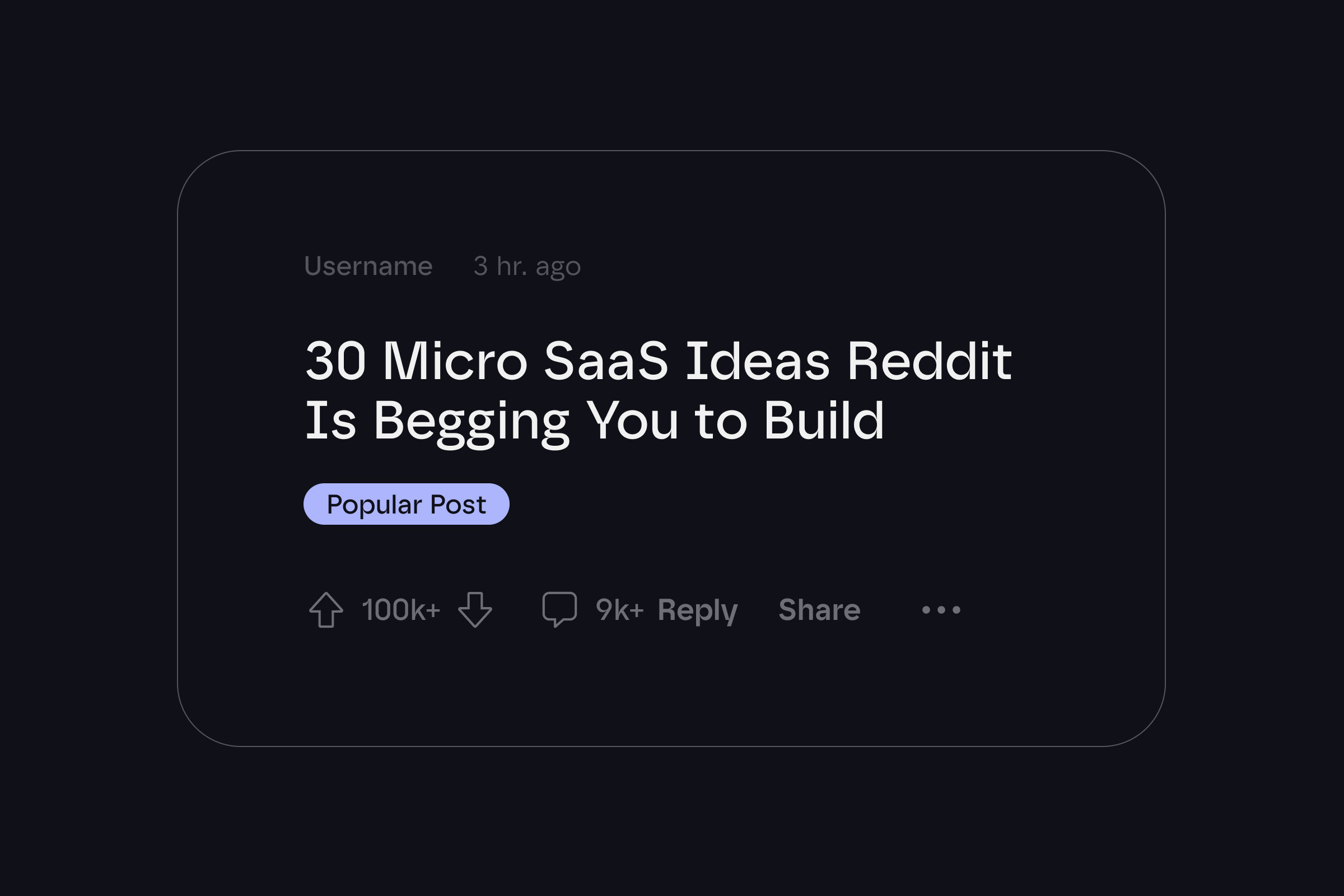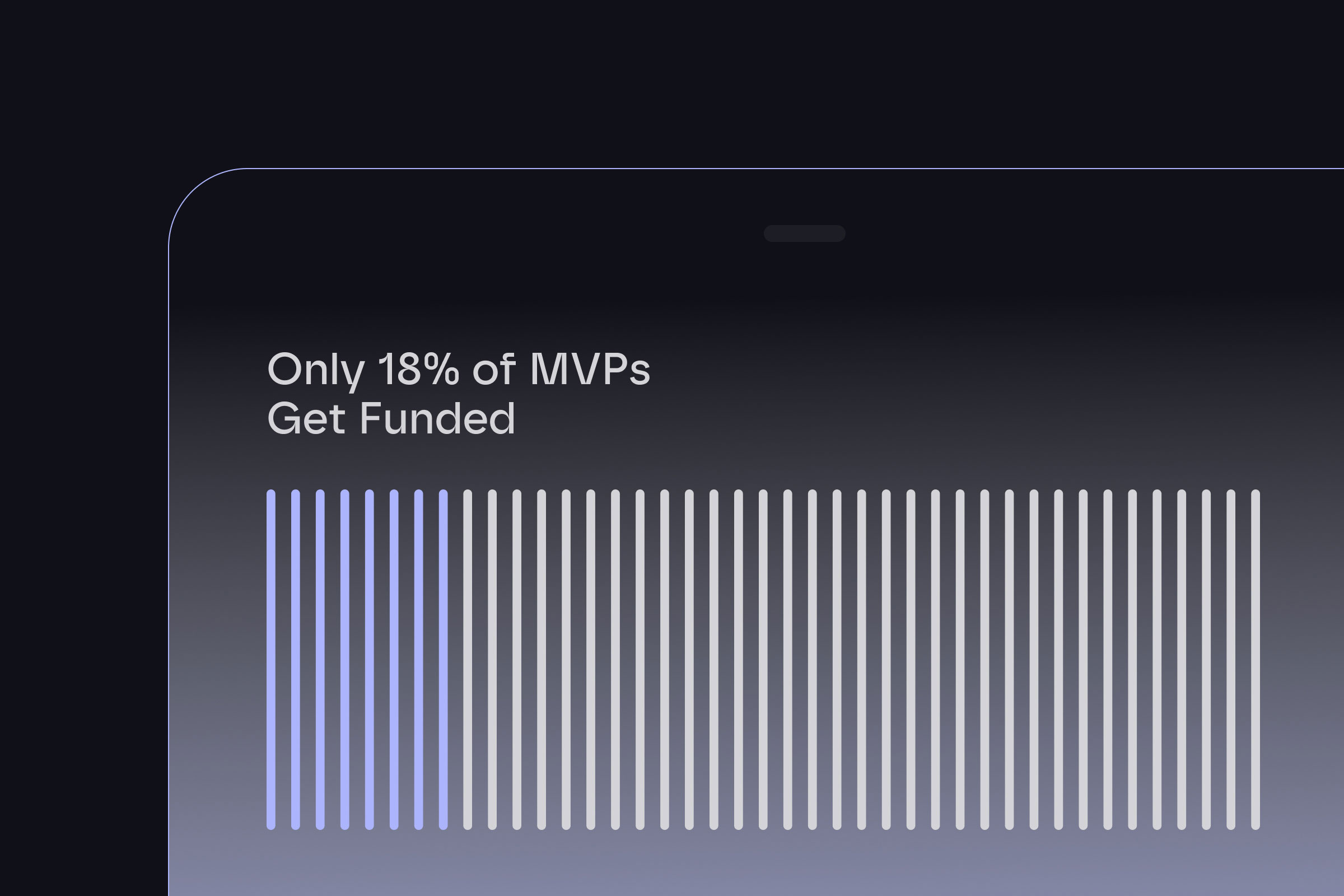Your startup isn't failing because you built too little. It's failing because you built too much.
I know that sounds counterintuitive. We've all been taught that more features mean more value. More use cases mean more potential customers. More bells and whistles mean more competitive advantage.
But if you check successful startup cases, you’ll see that they often started with a single-feature MVP.
The single-feature MVP isn't a compromise. It's a strategic advantage.
And today we’re going to show you exactly how it works.
We promise: this blog post won't be a waste of your time.
So let’s begin.
What Is a Single-Feature MVP?
A single-feature MVP focuses exclusively on solving one core problem for your users. No bells, no whistles, no "nice-to-have" features that sound good in brainstorming sessions.
Think of it as the product equivalent of a laser beam—intensely focused and powerful in its precision.
Instead of building a Swiss Army knife, you're crafting a scalpel. One tool, one purpose, maximum impact.
Thinking about your own single-feature MVP?
The concept sounds simple, but when you're staring at your idea, it's tough to know where to draw the line. What's essential? What can wait? How minimal is too minimal?
The sweet spot between "too basic" and "too complex" is real, and finding it makes all the difference between launching in 6 weeks versus 6 months.
See how we approach MVP development and discover which single feature should be your starting point.
The Difference: Multi-Feature vs. Single-Feature MVP
Traditional Multi-Feature MVP:
- User authentication + messaging + file sharing + notifications + analytics
- 4-6 months development time
- Complex user onboarding
- Scattered feedback
- Higher development costs
Single-Feature MVP:
- File sharing only
- 4-6 weeks development time
- Simple, focused user experience
- Clear, actionable feedback
- Minimal development investment
Why Single-Feature MVPs Outperform Kitchen-Sink Approaches
1. Crystal-Clear Value Proposition
When your product does one thing, users immediately understand its value. There's no confusion about what problem you're solving or how to use your product.
Dropbox didn't launch with team collaboration, password protection, and advanced sharing settings. It simply synced files across devices. That's it. Users got it instantly.
2. Faster Time to Market
Building one feature takes weeks, not months. This speed advantage is crucial in competitive markets where timing can make or break your startup.
Consider this timeline comparison:
- Single-feature MVP: 4-8 weeks to launch
- Multi-feature MVP: 4-6 months to launch
In those extra months, a competitor could capture your market, or customer needs could shift entirely.
3. Focused User Testing
With one feature, user testing becomes surgical. You're not wondering which of your five features caused the confusion—you know exactly what needs improvement.
How Single-Feature MVPs Supercharge Validation
More Accurate Market Feedback
When users interact with a single feature, their feedback is specific and actionable. Instead of hearing "I like the app but it's confusing," you get "The upload process is too slow" or "I need better file organization."
This precision transforms your product roadmap from guesswork into data-driven decisions.
Clearer Success Metrics
Measuring success becomes straightforward. Instead of tracking engagement across multiple features, you focus on one key metric that truly matters.
Example: A file-sharing MVP tracks "successful file transfers per user" rather than juggling metrics for uploads, downloads, sharing, commenting, and user management.
Faster Iteration Cycles
With one feature to maintain, you can iterate weekly instead of monthly. Bug fixes ship faster. Feature improvements happen rapidly. Your product evolution accelerates.
Do you struggle to prioritize features?
These frameworks will bring clarity.
Single-Feature MVP Success Stories
These companies prove that starting small doesn't mean thinking small—it means building foundations strong enough to eventually serve millions.
Calendly: The link that ended email ping-pong
Tope Awotona had $50,000 and a universal frustration. Meeting scheduling. You know the drill—five emails back and forth just to find 30 minutes that work for everyone.
His solution was almost embarrassingly simple: automated appointment booking through shareable links. Send a link. People pick their time. Done.
As a non-technical founder with limited cash, focus wasn't optional—it was survival. Awotona spent six months researching competitors before writing a single line of code. His insight? Existing solutions were trying to do too much.
The product grew itself. Every Calendly invite exposed new users to the tool. No marketing budget required. Within 2.5 months, they had 500 users with a 4% conversion rate.
Plot twist: The freemium model happened by accident. They ran out of money to build billing features. That "limitation" became their biggest growth driver.
From that foundation, Calendly methodically added team scheduling, 100+ app integrations, and enterprise features. The result? A $3 billion valuation by 2021, serving 20 million professionals and 86% of Fortune 500 companies.
The insight: Sometimes the most obvious solution is the right one. Universal daily pain points create exponential opportunities.
Patreon: When YouTube ads paid $100 for a $10,000 video
Jack Conte learned this lesson the hard way. After spending $10,000 producing a music video, YouTube ads generated exactly $100 in revenue. The math didn't work. At all.
So he built a platform with one feature: fans could pledge recurring monthly payments to support creators for each new piece of content.
Conte tested it on himself first. His video funding jumped from $100 to over $5,000 per video within weeks. Product-market fit proven. The concept spread organically through creator networks because creators started talking about their results.
The recurring donation model was operationally simple. Easy for creators to set up. Easy for fans to understand. Most importantly, Conte himself was user number one, giving him authentic insight into creator needs.
Patreon expanded systematically from there: creator tools and community features in 2014-2015, analytics and CRM tools by 2017-2018, then merchandise fulfillment and business infrastructure.
Today, Patreon has processed over $3.5 billion in creator earnings for 250,000+ active creators with 8 million patrons. They didn't just build a platform—they helped create the creator economy.
The pattern: When founders solve their own problems first, they usually solve them right.
Chewy: Heavy pet food bags nobody wanted to buy online
Ryan Cohen discovered the opportunity in 2011 while shopping with his poodle. He was planning an online jewelry business but realized something: pet food was heavy, annoying to buy in stores, and seemed perfect for delivery. Everyone said people would never buy pet food online.
Everyone was wrong.
The single-feature focus—online ordering and delivery of heavy pet food—proved crucial for operational excellence. By concentrating on one product category, Chewy perfected logistics and customer service. They became legendary for handwritten notes and custom pet paintings.
This exceptional customer experience became their competitive moat against Amazon. Superior service created customer loyalty that transcended price competition.
Chewy expanded methodically: full pet product catalog by 2013-2015, prescription medications and veterinary services by 2016-2017, then telehealth services and pet insurance.
Today, Chewy generates over $10 billion annually as a comprehensive pet care platform offering 3,500+ brands across products, healthcare, and services.
The surprise: Sometimes the "obvious" market gaps exist for good reason—but the right execution can prove everyone wrong.
Conclusion
You might have an urge to do more and fast. Today, you have huge opportunities. You access information, you havea network, tools, and ambition. All this is cool.
But the true advantage that you can have is to find your focus. Know how to prioritize.
The companies that won big started with almost embarrassingly simple products. They weren't trying to build empires on day one – they were laser-focused on solving one nagging problem their users actually cared about.
Start small. Get one thing truly right. And then you can expand accordingly.
But if you’re still confused or need clarification, our team is ready to listen to you and guide you properly.
Schedule a meeting here.
P.S. Rule of thumb: If your MVP takes longer to explain than a TikTok video, you've built too much.












